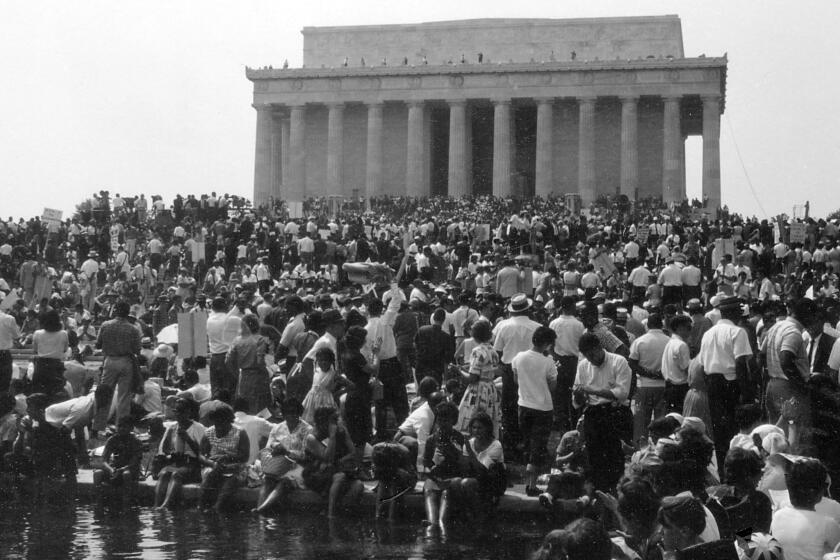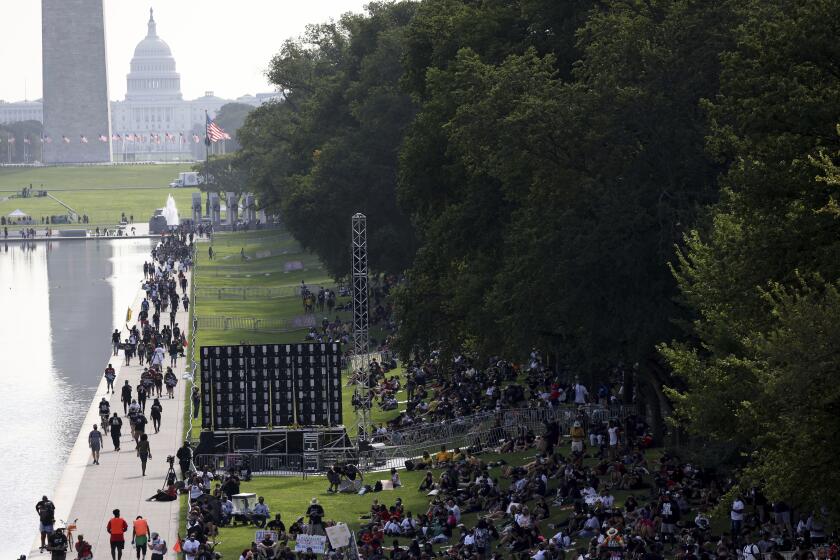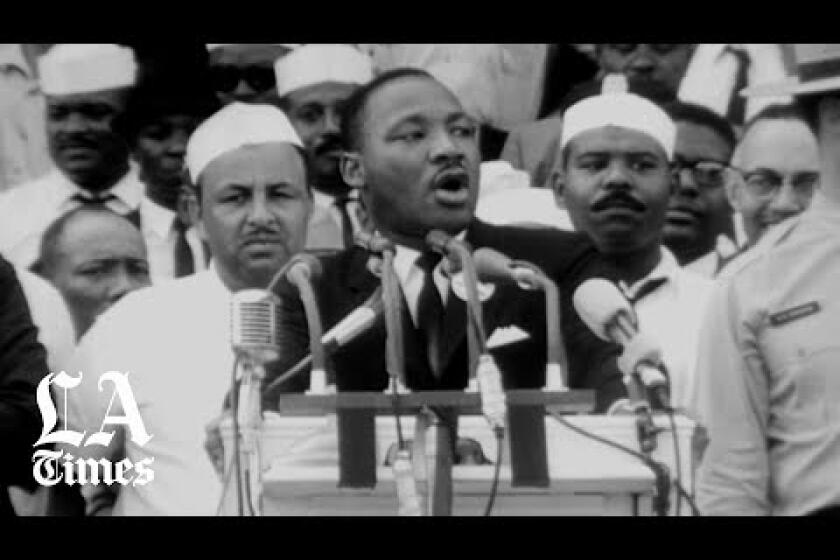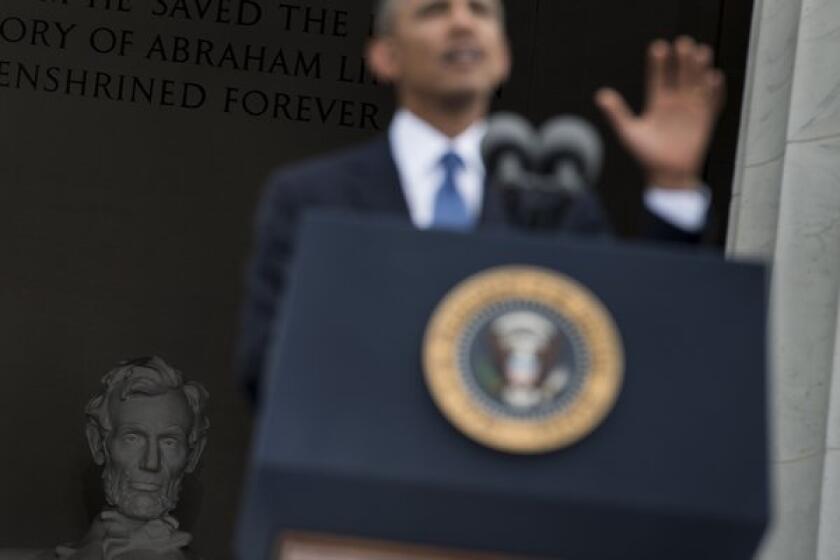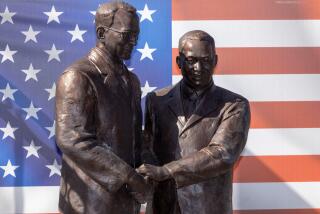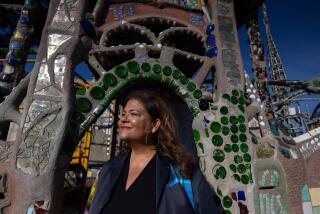Visitors to Lincoln Memorial say America has its flaws, but see gains since March on Washington

WASHINGTON — Fencing and construction workers greet visitors to the Lincoln Memorial, signaling that — for the moment — the monument to the nation’s 16th president is a work in progress. And so is the nation Abraham Lincoln saved and the dream that Martin Luther King Jr. envisioned at the memorial’s steps nearly 60 years ago at the March on Washington for Jobs and Freedom.
The spectrum of visitors to the Lincoln and MLK memorials and to the National Museum of African American History and Culture ranges from a 10-year-old elementary school student born in Colombia to a 70-something college advisor and retired military veteran. At least one visitor was at the Aug. 28, 1963, march as a child. They agree that portions of King’s speech have become a reality while some remain unrealized. Several note as well that the gains took a multiracial coalition to achieve.
Washington resident and 1963 march participant
Diane Miller was 12 when her mother gathered up Miller and her siblings “and had us march from 3rd and R Street down to the reflecting pool, which I think is about five miles,” the now-72-year-old said. “ On that day it was just exciting to merge into groups coming out of different streets, marching all the way down here.”
Miller, who intends to participate in the 60th anniversary, said she especially remembers the diversity of the crowd. “To be honest, it was the first time I saw a group of Anglo-Saxons or white people,” she said. “It was my first time realizing all white people were not against Black people. So it was a joyous occasion for me to participate.”
President Biden and Vice President Kamala Harris will meet with organizers of the 1963 gathering and relatives of the Rev. Martin Luther King Jr.
Miller, who was on a vacation Bible school field trip with People’s Congregational United Church of Christ, said she reflects on that day and believes much of what King spoke of has come to pass, but there are still battles. “We’re still trying to integrate into a society that did not accept us in the beginning.”
The future, she said, lies with the young people. “It’s very important that we encourage our youth today to continue to build themselves stronger.”
Civil rights advocates commemorate the 1963 March on Washington for Jobs and Freedom amid a nationwide reckoning over racial injustice.
Veteran, academic advisor and pastor
Tommie Babbs, 72, an academic advisor for the State University of New York at Buffalo served more than three decades in the military. The positives he has seen predate King’s speech, especially the diversity of the people who struggled alongside King. “A lot of white people took blows like we did. A lot of white people sacrificed. So this was an American movement.”
He thought a major step came when Barack Obama was elected president — twice. “You know, it wasn’t a fluke. It was intentional,” he said. “That made me trust America, believe in America, believe in the ideal of America.”
Babbs said his hope is that people will judge one another by their character and that is achieved through communication. “Once we get to know each other, once we have a conversation with each other, once we talk to each other, then color seems to go away.”
Visiting the city with other military veterans, the Air Force veteran said there have been dark times, including the race-related shooting in 2022 at the Tops supermarket in Buffalo that left 10 people dead and several others wounded. The incident was sparked by racial hatred but “it backfired because it brought so many white people together with Black people.” People of all races and ethnicities helped, he said.
Alester Pryor remembers the exact spot where she sat on the ground with her mother at the foot of the Washington Monument — a teenage black girl from Kansas about to watch one of the most stirring speeches in American history.
Civil rights attorney
Cynthia Robbins, who declined to give her age, was on the church field trip with Miller. She became a civil rights attorney because “I believed that Martin Luther King’s dream can be a reality. I believe that the arc of history does bend toward justice.”
That fight is critical now, she said, with the growth of white supremacists and hate movements and actions, such as the curtailing of part of the Voting Rights Act and of the use of affirmative action in providing equal opportunities.
Her own dream is people will embrace King’s message and see that there is still work to do and that the fight for justice is not about one race or another. “I think the most important thing of Martin Luther King’s work to me is that it is a continuous effort that we must continue to press on, that we can’t take justice for granted.”
Incoming college freshman
Zahir Harris, 18, visiting Washington with the Village Initiative Project out of Bridgeport, Conn., said he remembers hearing King’s March on Washington speech in middle school. The movement behind the 1963 march, he said, is unfinished, but he can see its successes in his own life as he walks around freely, eats where he wants and chooses a college freely.
Thousands once again take to the streets of the nation’s capital to call for economic and racial equality.
From Colombia to Greenville, S.C.
For Tomas Galeano, 10, it was his first visit to Washington with his parents from their home in Greenville, S.C. Galeano was born in Colombia and moved with his family to the U.S. three years ago. When he looks at the King memorial, he thinks of freedom. “Here in the United States, everyone can have their freedom. It doesn’t matter who they are or what they have gone through.”
He knows of King through school and from watching and listening to YouTube, and he credits the late civil rights leader for how he is treated. “When I started school, I was really nervous about how people would react to me about being from different country,” he said. “But, I was really impressed and happy from what it turned out, because everybody treated me with respect and equality.”
He said students need to be taught more about the late leader and to live as he did: “Try your best. Try your hardest. Never give up.”
Recollections of some of those who helped make the massive March on Washington happen 50 years ago.
The ‘Dream’ speech
About a mile from the steps where King spoke, the typewritten speech he read from that day is on loan to the National Museum of African American History and Culture. Small groups walk up to the display in the “Defending Freedom, Defining Freedom” gallery almost reverently. One or two visitors stay there reading every word.
“It’s one of the great speeches in history,” said Jan Gunning, 74, professor emeritus in economics at Vrije Universiteit in Holland, who lived in Washington decades ago and worked at the World Bank. “The power is in the way he spoke, the way he brought the crowd with him.”
Educator Asmatiek Fields, 34, was star-struck by the chance to see the speech that King created and read from that day. He talked about how he might share that with students at his school. “I got kids who won’t see it,” he said.
The women’s basketball team coach at Truett McConnell University in Cleveland, Ga., said the words of the speech, while inspiring, also brought “a lot of emotions.
“There’s a heavy feeling to it, just thinking of the timeline and what was going on.”
More to Read
Sign up for Essential California
The most important California stories and recommendations in your inbox every morning.
You may occasionally receive promotional content from the Los Angeles Times.
